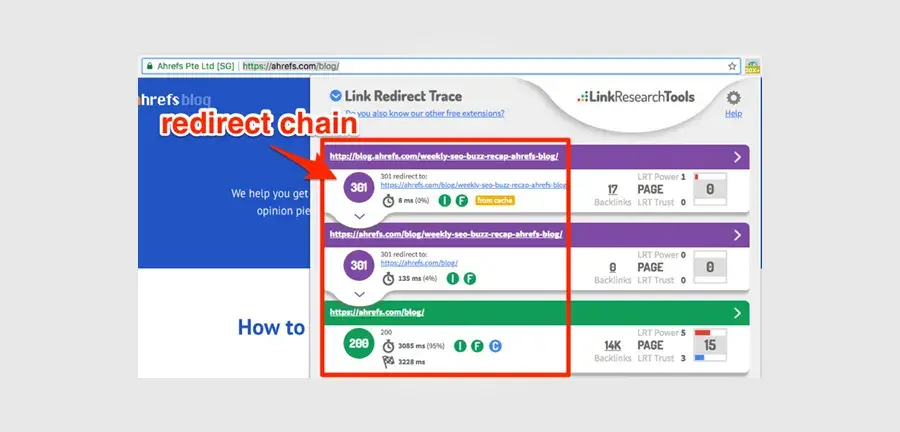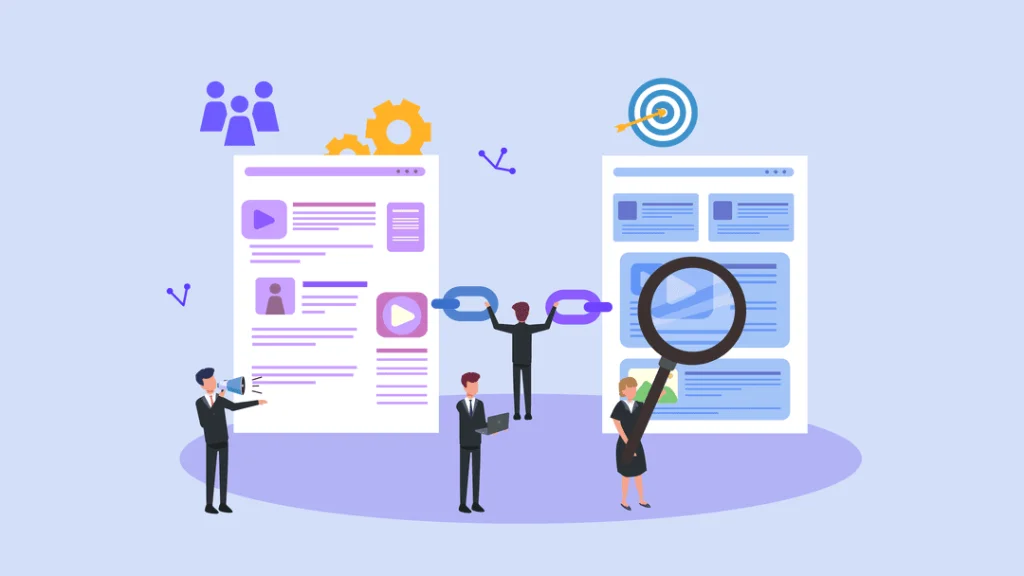Link reclamation stands as a crucial tactic within the realm of SEO (Search Engine Optimization), focusing on recovering misplaced or broken backlinks directed towards your website. Over time, websites undergo changes such as URL modifications, content updates, or migrations, resulting in broken links or unlinked mentions. The essence of link reclamation lies in identifying these occurrences and contacting website administrators to rectify broken links or convert unlinked mentions into valuable backlinks. Essentially, it revolves around maximizing the impact of existing brand mentions dispersed across the web.
The process commences by pinpointing instances where your website is mentioned without a hyperlink (unlinked mentions), or where links leading to your site are defunct or outdated. Subsequently, outreach efforts are directed towards the respective webmasters or site owners to solicit the addition of a link or the rectification of a broken one. Effective link reclamation not only bolsters your website’s SEO by fortifying its backlink portfolio but also ensures accurate representation of your brand across the digital landscape. Let’s delve deeper into the fundamental aspects of link reclamation, shedding light on its significance and implementation strategies.
Why Does Link Reclamation Matter?
Link reclamation holds significant importance in the realm of SEO (Search Engine Optimization) due to its ability to enhance a website’s backlink profile and overall online presence. Here’s why it matters:
Preserving Link Equity
Every backlink serves as a vote of confidence from another website, signaling to search engines the credibility and relevance of your content. When links pointing to your site break or go unlinked, you lose this valuable “link equity,” which can impact your search engine rankings. Link reclamation allows you to preserve and strengthen this equity by reclaiming lost or broken links.
Improving SEO Performance
Search engines like Google consider the quantity and quality of backlinks when determining a website’s ranking in search results. By reclaiming lost or broken links, you’re not only restoring lost link equity but also potentially gaining new backlinks. This can lead to improved visibility, traffic, and ultimately, better SEO performance.
Enhancing Brand Visibility
Unlinked mentions of your brand or content across the web represent missed opportunities to enhance your brand’s visibility and authority. Through link reclamation, you can convert these mentions into valuable backlinks, ensuring that your brand is accurately represented and recognized as an authority in your industry.
Protecting Brand Reputation
Broken links or outdated content associated with your brand can negatively impact user experience and tarnish your brand’s reputation. By proactively reclaiming these links and ensuring the accuracy and relevance of your online presence, you’re safeguarding your brand’s reputation and credibility.
How To Reclaim A Link?
Reclaiming lost or broken links involves a strategic process that encompasses three key steps: Identification, Outreach, and Tracking.
Identification
The first step in reclaiming a link is identifying instances where your website is mentioned but not linked (unlinked mentions) or where links pointing to your site are broken or outdated. To do this, you can utilize various tools and techniques. Use backlink analysis tools like Ahrefs, Moz, or SEMrush to identify backlinks pointing to your site and detect any broken links. Set up Google Alerts for your brand name or specific keywords related to your content to monitor unlinked mentions across the web. Regularly review your website’s referral traffic in Google Analytics to identify potential sources of unlinked mentions.

Outreach
Once you’ve identified opportunities for link reclamation, the next step is to reach out to the respective webmasters or site owners to request either the addition of a link or the fixing of a broken one. Effective outreach is crucial for success, and it involves. Crafting personalized and polite outreach emails that clearly explain the issue and provide the necessary information for the webmaster to take action. Offering value in exchange for the link, such as updated content, relevant resources, or a reciprocal link. Following up with gentle reminders if you don’t receive a response initially, but avoiding being pushy or aggressive.
Tracking
Tracking the progress of your link reclamation efforts is essential for measuring success and identifying areas for improvement. To effectively track your efforts, consider. Keeping a record of all outreach emails sent, including dates, responses, and any follow-up actions taken. Monitoring changes in your backlink profile using backlink analysis tools to track newly reclaimed links and any improvements in link equity. Analyzing changes in your website’s SEO performance, such as rankings and organic traffic, to assess the impact of link reclamation efforts over time.
Benefits Of Link Reclamation
Link reclamation offers a multitude of benefits for website owners and SEO professionals. Let’s explore the key advantages:

Improving your website’s SEO
Link reclamation plays a pivotal role in enhancing your website’s SEO (Search Engine Optimization) by bolstering its backlink profile. By reclaiming lost or broken links and converting unlinked mentions into backlinks, you’re effectively strengthening the authority and credibility of your website in the eyes of search engines like Google. This, in turn, can lead to improved search engine rankings, increased visibility, and enhanced organic traffic.
Increasing traffic
One of the immediate benefits of link reclamation is the potential for increased traffic to your website. By reclaiming lost or broken links, you’re not only restoring lost link equity but also tapping into new sources of referral traffic. When reputable websites link back to your content, it drives targeted traffic to your site, resulting in higher engagement, longer dwell times, and ultimately, more conversions.
Fixing 404 errors
Broken links, also known as 404 errors, can negatively impact user experience and hinder your website’s SEO performance. Link reclamation helps mitigate this issue by identifying and fixing broken links across the web. By reaching out to webmasters and requesting the correction of broken links pointing to your site, you’re ensuring a seamless browsing experience for visitors and preventing potential penalties from search engines due to broken links.
Improving user experience
Unlinked mentions of your brand or content may result in missed opportunities to provide additional value to users. Link reclamation allows you to capitalize on these mentions by converting them into clickable backlinks, thereby enriching the user experience. When users encounter relevant and easily accessible links within content, it enhances their navigation experience, fosters trust in your brand, and encourages further exploration of your website.
Common Challenges With Link Reclamation
While link reclamation is a valuable strategy for improving SEO and enhancing online presence, it comes with its own set of challenges. Understanding and addressing these challenges is crucial for successful link reclamation campaigns. Here are some common hurdles you may encounter:
Difficulty in Identifying Opportunities
One of the primary challenges with link reclamation is identifying opportunities for reclaiming lost or broken links. It can be time-consuming to sift through backlink reports, monitor unlinked mentions, and track down broken links across the web. Moreover, not all unlinked mentions may be suitable for conversion into backlinks, making the identification process even more challenging.
Low Response Rates from Webmasters
Outreach is a key component of link reclamation, but getting responses from webmasters can be a hurdle. Many webmasters receive numerous outreach emails daily, making it easy for your email to get lost in their inbox or ignored altogether. Additionally, some webmasters may be reluctant to add or fix links without clear incentives or may simply be unresponsive.
Lack of Control Over Third-Party Websites
Another challenge in link reclamation is the lack of control over third-party websites. Even if you successfully identify opportunities and reach out to webmasters, you ultimately rely on their cooperation to add or fix links. Unfortunately, you cannot force webmasters to take action, and some may refuse your request or delay the process indefinitely.
Tracking and Measuring Success
Tracking the success of your link reclamation efforts can be challenging, especially when it comes to quantifying the impact on SEO performance. While you can monitor changes in your backlink profile and organic traffic, attributing these changes solely to link reclamation may be difficult due to other concurrent SEO activities or external factors.
Claiming Unlinked Mentions vs. Link Reclamation
In the realm of SEO (Search Engine Optimization), both claiming unlinked mentions and link reclamation serve as strategies to maximize the value of brand mentions across the web. While they share similarities, there are distinct differences between the two approaches.
Claiming unlinked mentions involves identifying instances where your brand or content is mentioned on external websites but not hyperlinked to your website. These mentions may appear as plain text references or citations within articles, blog posts, or social media posts. The goal of claiming unlinked mentions is to reach out to the respective webmasters or site owners and request the addition of a hyperlink to your website, thereby turning these mentions into valuable backlinks.
On the other hand, link reclamation focuses on reclaiming lost or broken backlinks pointing to your website. This includes identifying instances where existing backlinks have become broken or outdated due to changes in URLs, content updates, or website migrations. The aim of link reclamation is to restore these lost links by reaching out to webmasters and requesting the correction of broken links or the updating of outdated ones.
While both strategies ultimately aim to strengthen your website’s backlink profile and improve its SEO performance, they differ in their approach and execution. Claiming unlinked mentions requires proactive monitoring of brand mentions across the web and targeted outreach to convert mentions into backlinks. In contrast, link reclamation involves identifying and rectifying existing issues with broken or lost backlinks, often requiring collaboration with external website owners.
How To Reclaim Lost Links
Link reclamation is a crucial aspect of SEO strategy, aiming to recover lost or broken links pointing to your website. Here are various methods to effectively reclaim lost links:
Finding Broken Internal Links
Start by conducting a thorough audit of your website to identify any broken internal links. Utilize tools like Google Search Console or website crawlers to locate these broken links within your site’s content.
Writing For Linking
Create high-quality, valuable content that naturally attracts backlinks. By producing engaging content, you increase the likelihood of other websites linking to your pages organically.
Fixing Broken Internal Links
Once broken internal links are identified, prioritize fixing them by updating URLs or content where necessary. Ensure all internal links lead to relevant and functional pages within your website.
Finding Lost External Backlinks
Employ backlink analysis tools such as Ahrefs or Majestic to discover lost external backlinks pointing to your website. These tools provide insights into the status of external links and can help pinpoint where link reclamation efforts are needed.
Adding Links To Your Webpages
Actively seek opportunities to add internal links to your webpages where relevant. Internal linking not only improves navigation within your site but also strengthens the overall structure and authority of your website.
Reclaiming Redirected Links
If your website has undergone URL changes or redirects, reclaim lost links by updating the redirect targets to the correct URLs. This ensures that previously established backlinks continue to contribute to your website’s SEO value.
Reclaiming Lost Links Through 404 Errors
Monitor your website for 404 errors using tools like Google Search Console and promptly address them by redirecting or reinstating the relevant content. Reclaiming links lost through 404 errors prevents the loss of valuable link equity.
Link Reclamation Through Google Alerts
Set up Google Alerts for your brand name or specific keywords related to your content. Google Alerts notify you of new online mentions, allowing you to identify potential opportunities for link reclamation.
Site Canonicalization Issues
Canonicalization issues refer to situations where multiple URLs lead to the same or similar content on a website. These issues can arise due to various factors such as inconsistent URL formats, URL parameters, or duplicate content across different pages. For example, a website may have both “http://” and “https://” versions of its URLs, leading to duplicate content concerns. Similarly, dynamic URLs with session IDs or tracking parameters can create multiple versions of the same page, causing confusion for search engines and diluting the authority of the content.

How To Fix It
To fix canonicalization issues, website owners can implement several strategies to consolidate duplicate content and ensure that search engines index the preferred version of each page. One common approach is to use canonical tags, which specify the preferred URL for a particular piece of content. By adding a canonical tag to the HTML header of duplicate pages, website owners can inform search engines that a specific URL should be treated as the canonical (or preferred) version. Additionally, setting up 301 redirects can help redirect traffic from non-preferred URLs to the canonical versions, consolidating link equity and avoiding duplicate content penalties. Furthermore, ensuring consistent internal linking practices and avoiding the use of unnecessary URL parameters can help mitigate canonicalization issues and improve the overall SEO performance of a website.
Some Important Things To Consider
When engaging in link reclamation efforts, there are several important factors to consider to ensure success and maximize the impact of your efforts:
Prioritize High-Quality Links
Focus on reclaiming lost or broken links from high-quality websites with relevant and authoritative content. While it may be tempting to reclaim every lost link, prioritizing quality over quantity will yield more significant benefits for your website’s SEO.
Diversify Your Anchor Text
When requesting the addition of new links or the correction of existing ones, consider diversifying your anchor text. Avoid overusing exact match anchor text and instead opt for a mix of branded, generic, and partial match anchors to maintain a natural and balanced link profile.
Monitor Your Competitors
Keep an eye on your competitors’ backlink profiles to identify potential link reclamation opportunities. If a competitor’s website gains a new backlink from a reputable source, it may indicate a similar opportunity for your website to reclaim a lost link from the same source
Be Strategic in Outreach
Craft personalized and compelling outreach emails when reaching out to webmasters or site owners. Clearly communicate the value of adding or fixing the link and offer any necessary assistance or resources to facilitate the process. Additionally, consider timing your outreach strategically to maximize the likelihood of a positive response.
